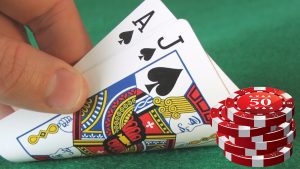Poker Tournament Strategy A to Z

Poker tournament strategy rewards patient players who know when to press and when to fold, and that starts with understanding how chips change in value.
In a tournament, your stack is your life, so each decision shapes your path to the bubble and beyond while fundamental poker knowledge guides your plan.
This guide walks through stages, stack sizes, position, table reads, and the mental game with clear examples you can use in your next event.
Why Tournament Strategy Is Different From Cash Games
In cash games, chips equal dollars, so you can reload and take thin edges more often. In tournaments, chips are life units, and their value swings based on payouts and surviving to the next pay jump.
Rising blinds and antes apply nonstop pressure that forces you to fight for pots you might skip in a cash session. Your goal blends survival with smart growth, so you avoid coin flips early and pick better spots as stacks shrink.
That balance shifts through the day, and the best players adjust fast without punting stacks in bad spots.
Understanding Tournament Stages
Every phase of a tournament requires a shift in your strategy. Early play is about control and information. Middle play brings wider steal spots and more pressure. Bubble time is where payouts affect every decision. Final tables reward sharp ICM reads and clear goals. Let’s break it down a bit more:

Early Stage Strategy
You start with deeper stacks and lower blinds, so you can play solid poker without forcing action. You can practice pot control with one-pair hands, value bet cleanly, and skip thin bluffs that build big pots. Preserve chips, watch who splashes, and build reads you can cash in when the blinds rise.

Middle Stage Strategy
Antes kick in, pots grow fast, and stealing becomes a big part of your hourly. Try to widen your open range in late position, 3-bet more against players who fold, and target medium stacks that want to avoid clashes. Image matters now, so track who thinks you’re tight or loose and lean into it.

Bubble Play (Money Bubble & Final Table Bubble)
Payout pressure hits, and ICM becomes real. If you have a healthy or middling stack, attack players who look like they want to sneak into the money, especially in blinds and late position. Short stacks should pass on thin spots, pick good all-in hands, and let others clash when pay jumps are near.

Final Table Strategy
Each pay jump is meaningful, but the win still matters. Spend time studying stack distributions, seat positions, and who can hurt you, then pick lines that ladder when smart while keeping paths to first. Short stacks need clean shove spots, big stacks apply pressure on medium stacks, and everyone tracks who is risk averse.
Stack Size Strategy
Stack size is another important part of a good tournament poker strategy. There are three main types of stacks to play around:

Short Stack (0–15 BB): Play push-fold poker with tight ranges from early positions and wider ranges on the button and small blind. Use charts or memory to avoid borderline calls, and watch for resteal chances against frequent late-position raisers. Once you shove, accept the result and reset for the next hand.

Medium Stack (15–40 BB): This is a sweet spot for pressure. Mix 3-bet folds against opens that look light, and pick squeeze spots when two players flat with dead money in the pot. Post-flop, plan turns in advance and avoid bloating pots with marginal pairs out of position.

Deep Stack (40+ BB): You can play small-ball and see more flops with suited connectors, suited aces, and broadways. Post-flop maneuvering matters, so plan multiple streets and chase implied odds when stacks allow it. Do not stack off light when SPR is high and your read is thin.
Position & Hand Selection
Position multiplies edge because you act last and see more info. Open fewer offsuit broadways and weak aces from early seats, then widen ranges on the button and cutoff with suited gappers, suited kings, and pairs.
If the table respects your raises, increase late steals and pressure the blinds with hands that play well post-flop. Adjust to your image every orbit by watching who defends and who avoids you.
Table Dynamics & Player Types
Every table is a puzzle with new pieces. Value bet larger against calling stations, trap LAGs with strong bluff-catchers, and attack nits with frequent steals.
When the table tightens up, raise more and use smaller sizes to risk less. When it loosens, you should tighten ranges and let opponents punt into your made hands. If momentum shifts, change gears fast and reset your plan.
You probably won’t have to deal with chip dumping, but make sure you watch for players that might know each other or be working together.
Blind Stealing & Restealing Concepts
Good steal targets are tight blinds, short stacks that are waiting for a better hand, and passive players who hate defending.
Size your opens to risk less while still putting pressure on defenders, then fold when the wrong player wakes up.
For resteals, look for aggressive late-position openers, stacks that can fold, and decent blockers like Ax or Kx. Fold equity is your friend, so avoid resteals against players who never fold or who trap often.
Post-Flop Tournament Concepts
C-bet frequency should drop on boards that smash the caller’s range or when stacks are short and mistakes are pricey. Skip the c-bet on low, wet boards after raising in early position and instead take a turn stab when checked to again.
In mid-to-late stages, turn and river pressure works well against capped ranges, especially when you block strong hands and your line tells a clear story. Pick bluff cards that remove top pairs or strong draws from their range.
Mental Game & Patience
Long events test focus, so plan short breaks, hydrate, and keep a steady routine. After a bad beat, breathe, mark the hand for review, and lock back in for the next decision.
Take notes on open sizes, timing, and showdowns, since one clean read can swing a tournament. Confidence grows from preparation, not luck, so trust your process.
But remember, even though you’re in the tournament to win, it doesn’t mean you have to be rude to other players. When you’re targeting other players, they can become vindictive, and that makes your life more difficult. Always remember proper poker etiquette, no matter the stage of the tournament.
Bankroll Management & Tournament Selection
Bankroll rules protect your seat in the game you love. For large-field MTTs, aim for a wide buffer, since variance hits harder with top-heavy payouts, while SNGs and satellites can be played with a tighter roll.
Pick buy-ins and structures that match your strengths, like slower blinds if you try to edge post-flop. When the roll and skill line up, take shots on soft schedules or series with overlays.
Summary
Strong poker tournament strategy blends stack-aware play, sharp position use, and smart pressure on the right opponents.
Skill grows with reps, hand reviews, and steady work on push-fold, ICM, and table reads. Your first poker tournament is more about learning the environment than winning, and should be seen as an opportunity to grow as a player.
To get your reps in quickly and easily, pick a trusted poker site, register for a low-stakes event today, and start building results one decision at a time.




